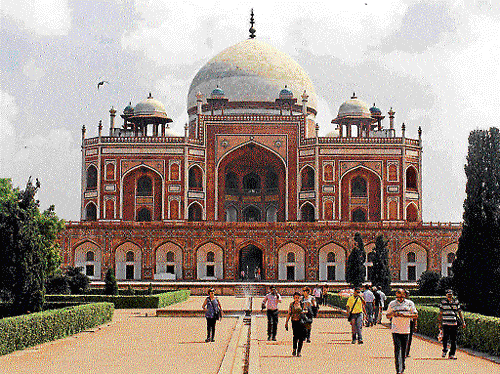
Juxtaposing Humayun’s Tomb earlier pictures with its new avatar makes you marvel at the restoration work that was undertaken in 2007 to bring back the lost sheen of this spectacular World Heritage Site.
Walk inside the passage to the mausoleum and the sideways are empanelled with text elaborating upon the changes brought through. When Metrolife visited the site post its reopening recently, it observed vigour in the air as along with the first-time tourists, there were Delhiites revisiting the tomb, gaping at its new found glory and expressing their appreciation.
The blue-coloured tiled canopies are the first to catch the attention of a layman as one walks towards the tomb. According to Aga Khan Trust for Culture (AKTC) that worked along with Archaeological Survey of India (ASI) to revamp the tomb, “For the Mughal builders, the tiles on the roof canopies represented a reminder of their Persian ancestry. In the 21st century, however, the tiles represent a lost skill. The conservation process required four years of experimentation, and commenced under the guidance of master craftsmen from Uzbekistan - who trained youth from the adjoining Nizamuddin Basti in tile-making.”
While taking a stroll on the lawns of Humayun’s Tomb, Metrolife spoke to a History enthusiast for his take on the revival. Asif Khan says, “I remember the Humayun Tomb of my childhood, when we used to come here with the school friends. Beautiful it always was, but by digging out past records and pictures, they have given a new lease of life to the decaying tomb.” He went on adding, “Posterity will now be so thankful that they would also get to witness the beauty of the tomb. Not many of us acknowledge the fact that it is one of the finest 16th century garden tombs constructed prior to the world renowned garden-styled-tomb, Taj Mahal.”
Along with the tomb, the monuments encompassing its periphery such Nila Gumbad, Isa Khan's garden tomb, Bu Halima's garden tomb, Arab ki Sarai gateways, Sundarawala Mahal and Burj, Batashewala group of monuments, Chausath Khambha and Hazrat Nizamuddin Baoli have also been restored. Humayun's Tomb was built in 1565, close to the Yamuna river which then used to flow through that area is infused with a fresh breath of
dynamism to it.